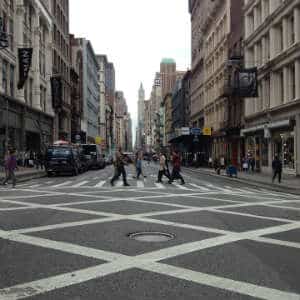We all know that drivers are supposed to keep their eyes on the road in order to avoid being involved in a car accident. But it’s equally important for drivers to be aware of pedestrians, perhaps even more so, because a pedestrian does not have the protection offered by the frame of a car and the seatbelts inside.
Recently, the driver of a nitrogen truck learned this lesson the hard way after being named as the defendant in a personal injury lawsuit filed by the truck accident lawyer who represents the pedestrian that he hit.
The driver, who was employed as a delivery man for a company that delivers compressed nitrogen used in many industries, was on route to one of his clients when he made a left-hand turn at an intersection. Although he successfully avoided the oncoming traffic, he failed to stay in the appropriate lane and also failed to see the 41-year-old man crossing at the crosswalk.
The truck struck the man. The impact was strong enough that it caused multiple serious injuries in the victim. After being rushed to the hospital by emergency responders, doctors diagnosed him with a subdural hemorrhage in the frontal lobe, fractures in his facial and orbital bones, and a kidney laceration which resulted in internal bleeding.
The injuries required emergency surgery as well as additional surgical intervention over the following year. In the end, the victim had to undergo a total of ten surgeries. The medical expenses added up to more than $800,000. He has also been unable to return to his profession as an engineer.
The victim and his wife filed a personal injury lawsuit against both the driver of the truck and his employer. They alleged that the driver had failed to keep a proper lookout and that the accident should have been avoided entirely. They also claimed that the company he worked for was negligent since he was acting as their agent at the time of the collision.
The parties were able to come to an agreement prior to the trial and the plaintiffs received $10.5 million in damages, despite the defendant’s claims that the injuries sustained were not as bad as the plaintiff was making them out to be.
According to the National Highway Traffic Safety Administration (NHTSA), an average of one pedestrian is killed every two hours in the United States and injured every 8 minutes. This means that nearly 15% of all motor vehicle fatalities involve a pedestrian and while many may assume that most accidents happen at night, a large portion of accidents take place between 6 a.m. and 9 p.m.
A pedestrian doesn’t even need to be crossing the street for an accident to occur - thanks to an increase in distracted driving, it’s not uncommon for drivers to swerve out of their lane and go up onto the sidewalk, running down anyone who happens to be in their way.
Depending on the type of intersection, pedestrians do not always have the right of way. However, it is still the responsibility of the driver to avoid a collision.
In these cases, New York applies comparative negligence. This means that a judge or jury will assign each party with a percentage that represents what part of the accident each one is responsible for. The plaintiff is still able to collect damages, however, any amount that they are awarded will be decreased by their percentage of responsibility.
No. The amount obtained is intended to compensate the plaintiff for the amount of money they have lost because of the accident. This can include both past losses and expected future losses.
Again, this depends on the particular case. For example, in this case, the plaintiff has been unable to return to work and will likely not be able to in the future. He previously made $80,000 and should have been able to work for at least another 14 years. That means, it is reasonable to assume he has lost at least $1,120,000 in future wages. That basic number doesn’t calculate in the benefits he would have received, bonuses, or raises.
See similar articles like: What To Do After An Accident With A Garbage Truck